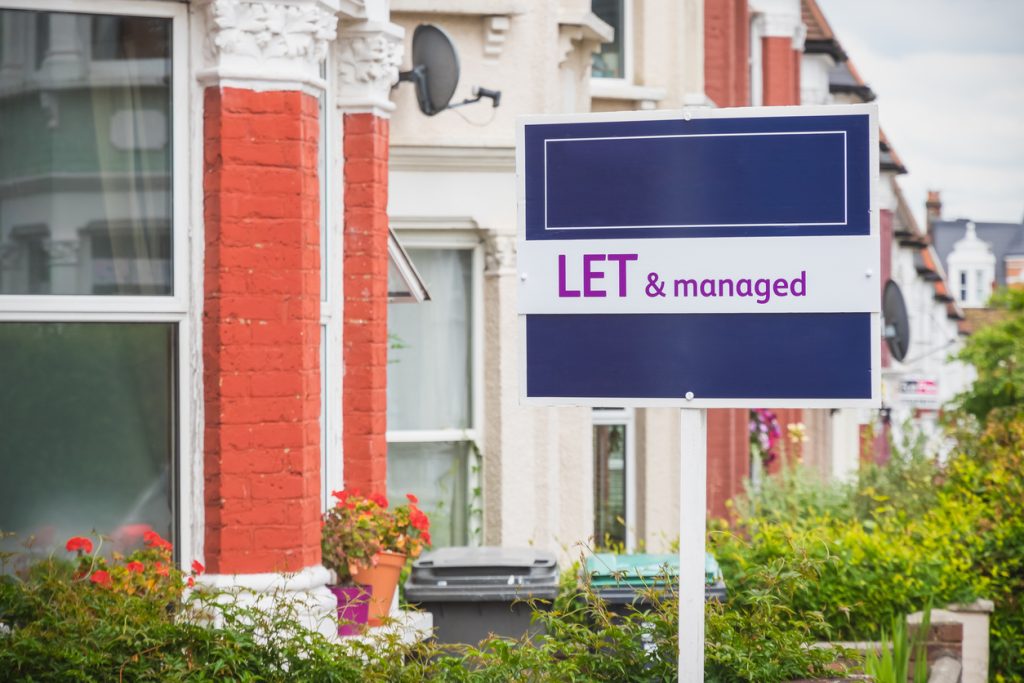
When you buy to let, the benefits seem obvious: the rental income will pay off the mortgage, and after a given time frame you will receive a healthy supplement to your income from your additional property or properties.
However, letting out a property can equally be a nightmarish experience which results in you losing money and possibly defaulting on your mortgage. One idea is to take out Landlord’s insurance to cover for unforeseen circumstances such as your tenant failing to pay the rent and for legal fees associated with debt recovery.
If you are already in a situation where your tenants are living in one of your properties and not paying the rent, the obvious solution is to first communicate with your tenants, and if all else fails to evict them and get other tenants into your property, but you need to follow the correct procedures first. And always remember the golden rule: keep a record of payments and a paper trail of correspondence.
Contact your Tenant to Request the Payment of Rent Owed
Follow these steps:
- Send your tenant a formal demand by first class mail – wait two weeks and then proceed to step 2 if you still haven’t received payment
- Contact the guarantor if your tenant has provided one, advising them that rent is in arrears
- Still no luck? Inform your tenant via writing once again that they are in arrears and let the guarantor know via writing that you will be taking legal action if the rent is not paid.
Tenants won’t pay rent: Eviction and Legal Action
Follow these steps:
- If you still have not received the rent owing to you, you need to give your tenant notice to quit to inform them that they must vacate your property.
- If they have not vacated your property within the time frame given on your notice to quit, you now need to give them notice to seek possession – now you do need to take legal action by applying for permission to take possession.
- The last step in getting your tenants evicted is to apply for a warranty for eviction where bailiffs will remove the tenants from the property at which point you can have your locks changed and request that the court makes a judgement for the rent in arrears and reasonable costs incurred.
Remember that legal costs can also put a dent in your pocket, so the best way to protect yourself financially if you have rental properties is to take out landlord’s insurance which includes legal protection.
Follow the above steps if your tenants won’t pay the rent owed to you.

Universal Credit has rolled out across the UK, but not everyone is happy, especially landlords. The intentions behind Universal Credit (UC) are good. It replaces six different benefits and simplifies payments. It should also encourage recipients to learn financial responsibility. Unfortunately, the process is proving problematic. One of the biggest problems is late payments. Many tenants have fallen behind in their rent, and many landlords believe they have no choice but to exclude tenants from receiving benefits.
First Of All, What Is Universal Credit?
Universal Credit replaces six benefits:
- Income-based Jobseeker’s Allowance
- Income-related Employment and Support Allowance
- Income Support
- Child Tax Credit
- Working Tax Credit
- Housing Benefit
Full benefits are direct to recipients on a monthly basis. In the old system, housing benefits were paid directly to landlords. This offered a measure of income security. In the old system, benefits were paid weekly or fortnightly. Now, recipients have to learn how to manage finances over a full month. So initially, difficulties result in late rent payments or no payments at all.
Universal Credit And Landlords
The Money Advice Service recommends that landlords engage with their tenants either before they go on Universal Credit or as soon as possible afterwards. It’s important to be tactful but still emphasise their rent responsibilities and offer support or make use of the support system in the system. Monday Advice Service is also a Budget Planner to help people better manage their income.
Landlords can apply for an Alternative Payment Arrangement (APA), wherein they receive rent directly.
Being proactive is better than being reactive in this instance because the Department for Work & Pensions (DWP) has already earned a reputation for being less than helpful when it comes to dealing with queries and complaints. Tenants and landlords alike are frustrated by the bundles of red tape and apparently apathy by the DWP.
Landlords have to work twice as hard as before to sort out UC-related admin with the DWP because the process is more complicated, more labour-intensive and more financially punitive (according to the Residential Landlords Association). For example, if landlords want direct payments, they have to submit applications which go through the following steps:
- Referral: Self-referral (by tenants) and referrals by landlords and the Citizens Advice Bureau (CAB).
- Screening: ‘Decision makers’ decide if claimants are vulnerable enough to need assistance like direct payment to landlords.
- Decisions: The final decision on eligibility is made by a DWP staff member. Decisions are made on a case-by-case basis.
- Review: Direct payment is a temporary solution. Regular reviews determine the necessity of direct payment.
What Landlords Have To Say

The Residential Landlords Association (RLA) has researched how landlords feel about UC and has found that, in general, landlords are frustrated with the system, particularly with the way in which queries are handled and the length of time it takes to process requests for direct payments.
Landlords say:
“The Universal Credit system is mysterious, unresponsive and devoid of communication.”
“The system whereby tenants get payment rather than the landlord is shambolic, universally disliked, makes tenants vulnerable to addictions and homelessness and prevents landlords from renting to people in receipt.”
“I will stop renting to people on Universal Credit as I won’t get rent to cover mortgage payments.”
Richard Jones, policy adviser and company secretary for the RLA, has acknowledged that while the DWP has worked to resolve some of the issues, there was still a long way to go.
Other Findings
In December 2015, the National Federation of ALMOs (NFA) and the Association of Retained Council Housing (ARCH) released a report on how UC has affected tenants and landlords. Findings include:
- 96% of landlords ‘frequently’ or ‘sometimes’ didn’t get due notification of tenants going on UC.
- 90% of social tenants on UC are in rent arrears due to a 7-week delay before the first payment.
- 89% of all new UC recipients are in arrears.
- 82% of claimants say payments are ‘frequently’ or ‘sometimes’ delayed.
- 82% of claimants say the housing element of the benefit is ‘frequently’ or ‘sometimes’ incorrectly calculated or omitted.
- 34% of recipients in arrears were subject to APA – direct payments to landlords.

If you need to gain access to your rented property for any given reason, for example, to do a gas certificate or to show potential new tenants the property, but your tenant does not grant you permission to enter, you first need to get permission from the tenant and until given you are not legally permitted to gain entry without their express permission.
This may seem strange logic; after all, you are the owner, and they are simply renting, but a tenant has very strong occupancy rights and has the same rights to “quiet enjoyment” as they would if they owned the property on which they live. In other words, if you force them to grant you entry you may face a harassment charge even though the Landlord and Tenant act section 11 states that the tenant must allow you entry to the property for necessary repairs and maintenance.
What You Should Do…
The long and short of it is that if they do not grant you access, you need to threaten to get a court order for “access” and then apply to the courts to do just that. Normally, your tenant will then grant you access to do the necessary inspection or repairs.
What You Should Not Do!
If you want to stay legally above board, under no circumstances do any of the following:
- Gain entry by force as you risk harassment or worse, an assault charge
- Have their services suspended such as gas or electricity because you will be infringing on their rights to “quiet enjoyment”
- Enter the property while your tenants are away without permission – if you do this you could be charged with trespassing.
If your tenants are not paying their rent and you need to evict them, read our advice on what to do if your tenant won’t pay the rent.

Normally you will request a deposit before your tenant moves in. This is to cover damage to any part of your property. This could include damage through negligence such as burns on the carpets. Another example is painting the walls bright colours and then not restoring them to their original colour before they leave. However, your tenants are not required to make repairs for wear and tear, such as carpets becoming worn over time or walls becoming scuffed and needing repainting. This is the landlord’s responsibility to maintain. In fact, the responsibility of keeping the property in a good condition falls largely on the landlords’ shoulders and deductions can only be made from a tenant’s deposit if they wilfully trashed the property. Or they broke or damaged a part of the property due to improper use or negligence.
Where The Landlords’ Responsibilities Begin And End
In addition to requesting a security deposit, it is the landlord’s responsibility (or indeed the letting agent’s responsibility) to go through the property with a detailed checklist. The purpose of this is to keep a record of existing damage before a new tenant moves in. The owner (or the letting agent) and the tenant can then agree on how and when repairs will be made. If the property is furnished, the landlord needs to provide the tenant with a detailed itinerary. Items such as a washing machine provided on the premises can pose a grey area because if the appliance breaks down from normal use, it will be the landlord’s responsibility to replace the appliance.
Making Deductions
You are perfectly entitled to make deductions for damage to your property that is not related to wear and tear. You could also charge for a cleaning service if the tenant has not upheld their side of the deal by leaving the place clean upon their departure. However, the tenant always has the right to request to see receipts for the cost of repairs. You are required to return the balance of the deposit including any interest earned.
If the tenant’s damage exceeds the security deposit, you will need to go to the small claims court to attempt to recover the additional damage.

When it comes to being a landlord, a lot of responsibility rests on your shoulders – not only do you need to keep good tenants in your property, you need to ensure the house is maintained well and make sure you put measures in place to prevent the tenants from damaging your property. In short, you need to protect your investment. With that in mind, here are some tips for common mistakes you should be careful not to make as a landlord:
1) Not Taking Out Insurance For Your Rentals
This might seem like one way to cut costs, but if your tenants default on their rent or you need to seek legal advice to arrange an eviction, you will really feel the pinch if you don’t have rent guarantee and landlord’s legal protection in place. Additionally, you will have the option to take out landlord’s home emergency insurance if a boiler goes or even if you are faced with a pest infestation.
2) Not Getting The Correct Paperwork In Place And Holding A Deposit
It is going to be much more difficult to take your tenants to court to obtain compensation for damage they have made to your property. It is a much wiser decision to hold a deposit from which you can deduct the cost of making repairs (excluding reasonable wear and tear). Similarly, check references and make sure you have the correct tenancy agreement in place.
3) Not Taking Immediate Action If The Rent Is Late
Ensure it is clear in the tenancy agreement when the rental is due and if the tenants miss this deadline, take immediate action. Read our article on what to do if your tenants aren’t paying the rent.
4) Cutting Corners When Selecting Tenants
Good tenants make being a landlord a pleasure cruise while bad tenants (or even a bad letting agent) can be an absolute nightmare. Ensure you have a strict selection process in place and if your property stands empty for a few months don’t rush to fill it with the “wrong tenants”; use the time to do necessary repairs and maintenance.
5) Not Keeping Good Tenants Happy
It is worth letting “good tenants” paint the walls a colour they like and not pushing up their rent sometimes because by keeping a good tenant happy, they will stay longer which will also indirectly save you money and time.
Letting agents can be heaven-sent – arranging all rentals on your behalf and dealing with your tenant’s complaints, or from the other side of the same coin, liaising with the landlord on your behalf. However, a bad letting agent can be far worse than managing your rental property or properties yourself.
If you have had an unfortunate experience with a dishonest or even simply a lazy letting agent, it’s time to look at how to resolve this issue, before you face bigger issues, such as a loss of rental income.
Follow our easy five-step process to making your complaint, but never forget the golden rule keep a paper trail of your complaints, email is a great way to do this, even if you need to follow up a phone call with a confirmation email.

- Start with the agency itself The best place to go is higher up in the letting agency’s food chain by complaining to a manager. You could also ask if the agency has an internal complaints procedure document.
- Now go to a trade body or Property Ombudsman
If the letting agent manager is not willing to resolve the dispute or improve their service offering, it is time to see with which industry body they are registered. Some of these industry bodies include The Association of Renting and Letting Agents, The National Association of Estate Agents, The National Approved Letting Scheme, and The UK Association of Letting Agents.
Especially if it is a large letting agent, it is very likely to be a member of the Property Ombudsman which makes the complaints process much smoother for you, because they have a code of practice that the letting agents have to follow. Don’t forget that contacting the ombudsman must always follow step one and come before taking your complaint to the small claims court (step 5 below). - Contact the owner You can follow this step before step two if you prefer. This will require looking in your contract, email correspondence from the letting agent, or other documentation for the owner’s name or contact details. Alternatively, you are well within your rights to request this from the letting agent.
- Look to the Advertising Standards Authority This step only applies if you are charged fees that were not quoted upfront because since last year, letting agents need to tell you about every single fee they will charge you upfront. If you have been hoodwinked by hidden charges then you should report this to ASA.
- Your last resort – the small claims court You can follow this step if your letting agent has caused you to lose money (and less than £5000 at that). You will need to visit the HM Courts & Tribunals Service in order to get the paperwork you need to fill out.
If you have had a negative experience with a letting agent, it may be time to consider leasing out your properties yourself or taking out insurance for landlord legal protection.
Whether you are a tenant worried about receiving your deposit back, or a landlord looking to establish your rights and obligations, the question of end-of-tenancy cleaning and whose responsibility this factor lies with is an important issue to ensure all parties are clear on.

It’s enough of a chore to clean up after yourself, let alone clean up after others. So when you move into a new flat, you don’t want any signs of the previous tenant. Particularly if the signs indicate a lax attitude to hygiene. End-of-tenancy cleaning ensures that future tenants will feel as though they are moving into a brand-new property.
Existing occupants are usually responsible for end-of-tenancy cleaning. That doesn’t mean you have to get down on your knees and start scrubbing floors. Instead, we look at what end-of-tenancy cleaning really requires.
Who Is Responsible for End-Of-Tenancy Cleaning?
The tenant is responsible for the end-of-tenancy clean. They are responsible for returning the property to the landlord in the same condition with which they received it, minus any wear and tear.
‘Wear and tear’ has no precise definition but has a common sense application. Goods will naturally deteriorate over time. Carpet and walls may fade in colour slightly, etc. That is legislated for here. Anything above and beyond this reasonable deterioration, tenants can be held responsible for.
The landlord is legally entitled to recover any costs associated with returning their property to its previous condition from the tenant’s deposit, if applicable, and this includes cleaning.
What Are the Penalties for Inadequate End-Of-Tenancy Cleaning?
End-of-tenancy cleaning is required if you want to claim the full amount of your deposit back at the end of your tenancy.
Around 61% of UK tenants lose some of their deposits each year. Cleaning issues is the main cause, being a factor in 80% of the cases, with the average deduction for cleaning £200.
How Clean Is Clean?
Tenancy agreements stipulate that tenants leave the property in the same condition they found it. You are, of course, not expected to improve the condition of the property. Ensure you keep copies of the inventory reports, so you aren’t penalised for damage incurred before your arrival.
This is one reason landlords and tenants alike are advised to have photographic evidence of the state of a property upon moving in so there is no question of what condition it needs to be returned to.
Who Has to Clean the Property?
End-of-tenancy cleaning is the responsibility of the tenant, but you can hire a cleaning company. Schedule the job as close to the final inventory check as possible so that the inspection will find the flat in its cleanest state.
DIY Cleaning

If the property is a small one, you could save yourself some money by cleaning it yourself. It also helps if:
- You’ve kept the home meticulously clean throughout the tenancy
- You have experience with cleaning
- The property is unfurnished
Remember that you may need specialised cleaning equipment, like carpet and upholstery steamers. If you’re uncomfortable with that, or if you have any allergies to cleaning products, it may be best for you to employ a professional company. After all, your security deposit is on the line here.
Hiring a Professional Cleaning Company
In some cases, landlords have managed to include a “professional cleaning” clause in the agreement, forcing tenants to pay up to £400 for professional cleaners. For the most part, landlords aren’t in a position to make such demands. The Office of Fair Trading addresses this issue in its guide to unfair terms in tenancy agreements.
Note: If the tenant(s) don’t meet the minimum cleaning requirements, landlords may have to hire a cleaning service to get the job done. In this case, they can charge the tenant for the cost.
Experienced landlords can recommend good cleaning companies; in fact, they may have agreements with a cleaning company for good rates. You should try to find an insured provider, so you can rest easy that the costs of any damage or theft will be covered by the cleaning company.
Tip: If you are the tenant, it would help a lot if you could obtain a copy of the final inventory inspection checklist from your landlord. Whether you are conducting the cleaning operation yourself or hiring professionals, the checklist is an invaluable resource, as you will know exactly which elements of the property will be the focus of the inspection.
How Much Does an End-Of-Tenancy Agreement Clean Cost?
Professional cleaners are the safest way to ensure you have your full deposit returned. However, if you live in a small property, you may be able to do it yourself.
This will be easier if you have taken care to keep the property in good condition throughout the tenancy or if the property was rented unfurnished.
You may still need to use specialised equipment, beyond the rubber gloves and the Dettol! Carpets, in particular, will likely need cleaning by professional equipment.
With deposits typically 4 or 5 weeks of rent, most tenants enlist a professional cleaning company to secure it. You can find a company or your landlord can often recommend one- sometimes they can even help you benefit from preferential rates.
Prices vary, accordingly to how many rooms the property has. You can expect £100-150 for a studio flat, and upwards of £300 for a larger family home.
An inventory is useful to protect both parties- what was included in the property when the tenancy started and what condition it was in. For renters, they also make you aware of what will be the focus of the inspection, so you can prioritise accordingly.
Does the Landlord’s Insurance Cover Damage or Cleaning at the End of the Tenancy?
Landlords insurance does not cover the cost of end-of-tenancy cleaning. However, Surewise Landlords Insurance DOES cover:
- cost of removal of tenant’s debris
- malicious damage or theft by tenants
The Takeaways:
- Tenants are responsible for end-of-tenancy clean
- They are responsible for restoring the property to the state they got it in, minus any reasonable wear and tear
- Landlord insurance will not cover end-of-tenancy cleaning (however the tenants deposit can be used if they do not adequately fulfill their cleaning obligations)
- Landlord’s insurance does cover the cost of removing tenant’s debris and any malicious damage or theft by tenants
If you are a landlord, looking for peace of mind, check out our popular landlord’s buildings and contents insurance. Cost-effective protection, with policies that can be tailored to you and your requirements.
It is estimated that up to a fifth of the UK population live in privately rented accommodation, so it may come as a surprise that for so many people living in rented accommodation, few are well versed on their rights when it comes to repairs that need carrying out on their home.
When you rent your home and something goes wrong, it isn’t always clear who the responsibility for arranging repairs lays with. For many tenants, this can lead to long periods living in a fault home, whether that’s no heating, leaks, or something else, trying to work out who is responsible for fixing the problem.

Typically, it is down to your landlord to fix any issues that occur, but sometimes it is up to the tenant to address the issue. To avoid paying out unnecessary fees – or living in a house in need of repairs for a prolonged period – we’ve covered who is responsible for what in this article.
If you are currently renting your home, or are a landlord renting out a property, this article will address who is in charge of what repairs in your rented home, and when.
Contents
- House Repairs: Who Is Responsible?
- How long does my landlord have to carry out repairs?
- What should I do if my landlord won’t carry out repairs?
- Tenant Responsibilities
- Check your tenancy agreement
House Repairs: Who Is Responsible?
Typically, house repairs fall within the remit of the landlord’s responsibility, rather than the tenants. Although there is not an exhaustive list of what a landlord is obligated to repair in your rented home, there are some repairs that landlords must deal with.
These include:
- Fixing broken sinks, toilets, and baths and ensuring they remain in a useable, sanitary condition
- Boiler repairs
- Electrical wiring and electric fires or heaters
- Structural repairs, including any repairs to the exterior of the building, roof, guttering and external doors and windows
- Repairs to the chimney if your house has one
It’s important to note that your landlord only has to deal with these repairs once they are aware of the problem – so regular communication with your landlord to keep them up to date on the state of your home is essential.
How Long Does My Landlord Have to Carry Out Repairs?
Once you have informed your landlord that repairs are needed, they are required to carry out the necessary repairs within a reasonable period of time.
How long exactly they have to carry out this work depends on how serious the problem is.
They must carry out repairs within a reasonable period of time. How long your landlord has to do the work depends on how serious the problem is.
What Should I Do if My Landlord Won’t Carry Out Repairs?
If you have informed your landlord of the repairs that are needed and they haven’t acted on this in a reasonable amount of time, there are a few things you can do.
You should keep all evidence of your communication with your landlord, and you can then report disrepair in your home to your council’s private renting team. If you are not sure what repairs lay with what party still, the first thing you should do is to consult your tenancy agreement, which should outline the responsibilities of both the tenant and the landlord.
As a last resort, you can also take your landlord to court.
You should not withhold rent from your landlord to force them to carry out repairs on your home, as this can give them grounds to evict you at a later date.
Tenant Responsibilities
As you can see, a lot of things that could go wrong with your home are the responsibility of the landlord to repair, which will be a relief to many tenants.
That being said, there are a few things that you (as the tenant) are responsible for – often things that are caused by wear and tear due to you living in the property, or accidental damage that is your fault.
However, there are some things that must be repaired directly by the tenant. This is for cosmetic damage, which can include:
- Damage to door or window (by your own fault)
- Damaged plaster
- Any damage to internal doors or skirting boards
- General maintenance and cleaning
- Small wear and tear repairs
As a tenant, you also have certain responsibilities to keep your home in a reasonable condition. These include:
- Keeping your home (reasonably) clean
- Performing safety checks on the electric appliances that you own
- Maintaining the garden to a reasonable state
- Minor maintenance including replacing light bulbs and smoke alarm batteries when necessary
You don’t need to keep your home in a better condition than before you moved in, but you do need to keep your home maintained to a reasonable level.
Using Your Tenancy Agreement
If you are confused on your rights for a certain repair or part of your contract, your first port of call should be checking your tenancy agreement. Here, you might find that your landlord has included extra conditions that they are responsible for repairing (such as fault fridges. washing machines etc) or find more information as to what the best way to communicate these problems is.
Whether you are a tenant renting your property, a landlord renting out your property, or you’re living in the home you own, protecting your home and its contents from unexpected accidents is essential.

When your income is reliant on other people being able to pay their rent on time every month, one of the biggest nightmares for every landlord is having a tenant who is unable (or simply won’t) pay their rent.
While many landlords cover their property with home insurance, few will take the additional step of purchasing rent guarantee insurance for these situations.
Below, we’re going to take a look at exactly what rent guarantee insurance is – and whether you really need it as a landlord.
What is Rent Guarantee Insurance?
Landlords rent guarantee insurance protects you if your tenants fail to pay their rent or for service charges.
Some buildings insurance policies do cover you for missed rent, but this is only the event of an accident such as a fire or other damage to the property. If your tenant falls into debt or simply refuses to pay your rent, rent guarantee insurance is what you need to protect yourself.
What Does it Cover?
Rent guarantee insurance covers you for missed rent (this typically has to be at least one month)
Your policy will typically cover you for:
- Rent that your tenants have not paid
- Legal fees and expenses
- Expenses for accommodation etc while you try to repossess your property if needed
Do I Really Need It?
Rent guarantee insurance provides the peace of mind that should you be unlucky enough to have a tenant who cannot or will not pay their rent, you have the policy to protect your income.
Starting from £61.50 for six months worth of cover, rent guarantee insurance is not overly expensive for the protection it provides – and will be well worth the investment should you fail to receive your rent for several months.
What Else Can I Do If My Tenant Fails to Pay Their Rent?
Of course, your rent guarantee insurance is not a permanent solution – ideally, you want your tenant to either start paying their rent or to evict them and find a new tenant.
This process can be long-winded, not to mention expensive if you need to take them to court (which again, is where rent guarantee insurance is so useful with cover for your legal expenses).
Take a look at this guide to dealing with a tenant who has fallen into arrears for a better idea of how to handle this situation.
If you are a landlord and haven’t protected your income with rent guarantee insurance yet, get a quote for your rental property today – our policies are available in both 6 and 12-month duration and have zero excess or hidden fees:

If you’ve ever been a landlord, this scenario will almost certainly sound familiar to you. Your property needs a small repair. It’s a loose door hinge, a dripping pipe, or something else minor that could easily be repaired by the tenants in an hour or two. It could also be just as easily fixed if they would only take a few minutes to call you. However, it is, for the most part, ignored. Eventually, your tardy tenants urgently report an impending emergency as the situation has deteriorated to the point where the minor repair has become a major undertaking.
Let’s be clear that we’re not talking about tenants who don’t know there’s a leaky pipe at the bottom of the garden where they never go. We’re discussing those who know there’s a problem and don’t report it until the problem escalates.
Why it Happens
There is an economic truism known as the tragedy of the commons. It illustrates that people who don’t have a stake of ownership in a resource don’t take care of it. A homeowner speedily jumps on small repairs if they are sensible; otherwise, they become bigger and more expensive. If a hinge on my door is loose, I tighten the screws to stop the hinge from being pulled out of the frame and possibly the entire door from being damaged. If I don’t own the door, however, I’ll wait until it’s difficult for me to use the door.
How Bad is The Problem?
According to a study by insurance giant, LV=, tenants who ignore small repairs until they are major problems cost UK landlords over £4 billion a year.
Furthermore, the study found that 37% of all tenants genuinely felt that repairs could wait until it was an emergency. This means landlords can expect expensive trouble from more than one-third of all renters.
What Can I Do About Tardy Tenants?
Of course, you’re going to want excellent landlord insurance to protect you against tardy tenants with this attitude.

Other Possible Solutions to the Problem Include:
- Encourage your tenants to report any problems. Try and forge a friendly, accessible relationship with them. You can even try rewarding quick reporting of problems with a rental discount.
- Draw up a detailed procedure for reporting and effecting needed repairs. Make the tenant aware of the process and set out a procedure something like the one recommended on thebalance.com. If you sound more professional than the average landlord, they’re likely to regard keeping you in the loop as a higher priority than would otherwise be the case.
- Use a letting agent so they can deal with this kind of problem. Letting agents have preferred contractors for repairs, established procedures, and an inspection schedule to keep tenants in line. How’s that for peace of mind? However, they also cost money and some agents, as with all industries, are not as professional as they could be. Find out what you need to consider when choosing a letting agent.
The tenant-landlord relationship can be tricky, as both parties may have been taken advantage of in the past. However, most people are decent, and it’s quite possible to foster a relatively trouble-free relationship that doesn’t burden either of you with unlooked-for expenses.
Mould, landlords and tenants: They’re a combustible combination. Tenants feel landlords ought to take responsibility for the problem and fix it ASAP without any cost to them. Landlords, on the other hand, often feel that mould and dampness caused by condensation are tenants’ fault because they dry clothes inside or keep the windows closed when they shower and cook.
Who Is Right?
That’s a tricky question, actually.
Technically, it depends on the type of mould.
Landlords are typically responsible for mould caused by leaks, structural defects and ineffective or defective damp-proof courses. Theoretically, tenants are responsible for condensation-caused mould due to a lack of ventilation. However, it’s often difficult to prove exactly what the cause is and so determine who is responsible. In this case, consulting a damp expert is highly recommended.
If the expert determines that condensation caused the problem, landlords can pay for repairs out of their tenants’ deposit. However, if the tenants disagree, they can dispute the matter through the rent deposit protection scheme. An arbitrator will settle the matter.

Legally Speaking
Section 11 of the Landlord and Tenant Act 1985 makes it a legal requirement for landlords to solve damp and mould problems. They fall under the repairing obligations section. The Housing Health and Safety Rating System (HHSRS) also make treating and repairing damage caused by damp mandatory. The HHSRS also states landlords must ensure that tenants’ physical and mental health is not affected by mould.
Mould and Damp Can be Divided Into 3 Categories
Penetrating Damp: This is the landlord’s responsibility because it results from water entering a property from an external source, for example, a leaking roof, leaking pipes, leaking gutters, and leaking windows.
Rising Damp: This is the landlord’s responsibility because it results from crumbling plaster, rotten skirting boards and wooden floors, and no damp-proof course or ineffective damp-proof courses.
Condensation: This is the most common type of mould and can be attributed to tenants’ lifestyle, for example, drying clothes inside. Landlords and tenants often dispute responsibility.
What Can Landlords Do About Mould and Damp?
Landlords are legally obligated to maintain the structure of the building to ensure tenants’ safety. Part of this includes ensuring proper drainage so homes, flats, and basements don’t flood after heavy rains.
Another part is regularly applying a damp-proof course to problem areas, especially where rising damp is a risk. After a course has … run its course, landlords should inspect the areas to see if there is any damage to the plaster that needs to be repaired before starting another course.
Finally, landlords should be proactive about ventilation. It’s all very good and well to say that tenants must keep windows open and not dry their clothes inside. But how willing are landlords to follow their advice mid-winter? It’s far smarter to ensure that there is adequate ventilation from the start, especially in bathrooms and kitchens, which are prone to condensation-based damp. If possible, landlords can provide a tumble dryer (with ventilation) or a proper airing cupboard so that tenants don’t have to hang clothes over radiators to dry them.
A little bit of foresight and some maintenance can make mould a non-issue for landlords. At the very least, if they can prove that they’ve done everything possible to prevent mould from their side (receipts for damp courses, documentation of repairs, invoices for ventilation, etc.) and tenants complain of mould, landlords have a good case to prove that they are not at fault.
What Can Tenants Do About Mould and Damp?
Tenants can get over themselves and stop waiting for their landlords to act. They can start thinking more proactively to ensure their own comfort and health. For example, if they know that ventilation is not the best, they can ask the landlord to improve it, and while they’re waiting, they can ensure windows are open during cooking and showering and when their home is full of guests. Just don’t put Nan in the draft.
Tumble dryers may be expensive, but there are small air-drying gizmos available that are far more affordable and fold away when not in use. Take a look at the cheesy adverts on TV or do a quick search online. Once bought, it’s yours, no matter where you move, so you always have a way to dry your clothes. It’s an investment really.
Wipe up any spills, drips or leaks immediately; don’t let any liquid pool. Standing liquid presents an opportunity for mould to grow, so mop up after a bath or shower or a vigorous dish-washing session. Report leaking pipes immediately and do your best to keep the area around the leak as dry as possible until it has been repaired.
Keep an eye on high-risk areas, including bathroom walls and ceilings, clothes cupboards, and around pipes. Report mould to your landlord as soon as you see the first signs. In some cases, it can be easy to fix the problem. You can get special mould cleaner from supermarkets, for example. However, if you wait too long and the problem gets worse, a more expensive fix is required. And that puts everyone in a bad mood.
What are The Consequences of Not Dealing With Mould?
Mould left unchecked can cause structural damage to the property. This affects the property’s value and also makes repairs difficult and expensive.
It can also cause health problems, especially if children, old people and people with asthma or other respiratory conditions live in the building.
Does Landlord Insurance Cover Mould?
As a rule, no. Technically, insurance cover doesn’t include preventing, treating and repairing mould and damp as they are maintenance tasks. Furthermore, if an emergency situation arises from a failure to properly address mould and damp, your landlord’s emergency insurance is unlikely to pay out.
However, if landlords take all due care to prevent and treat mould and damp, and an emergency situation occurs, it’s possible that insurance policies will pay out. After an investigation, of course.
Changes to tax laws that govern buy-to-let properties have landlords up in arms. The planned buy-to-let tax is deemed unfair because it targets private landlords who have buy-to-let properties in their own names and doesn’t target companies that invest in rental properties. Furthermore, tax will be on turnover rather than profit, which will eat into incomes. Landlords also won’t be able to claim buy-to-let costs as business expenses.
Cherie Booth Blair QC and QC Conor Quigley represent buy-to-let landlords in the fight against the changes. Unfortunately, they recently lost an attempt to win a judicial review because the high court’s Mr. Justice Dingemans believes the case is bound to fail.
The fight will continue, but private landlords should probably prepare themselves for the phasing-in period, which starts in 2017.
Private Landlords Are an Easy Target – Again.
According to Ms. Booth Blair, the government is unfairly penalising private buy-to-let property owners by singling them out while corporate investors keep enjoying various tax perks. Landlords, who include Ms. Booth Blair, said they would keep engaging with the government until the inherent unfairness of the changes is understood.
Axe the Tax coalition is another group fighting for equality in the buy-to-let market. The coalition represents over 150,000 private landlords who are deeply unhappy with the new tax laws. Coalition representatives said the new tax would increase rent rates to mitigate the inevitable losses the changes will bring. Furthermore, the representatives believe other potential consequences include landlords losing their properties or having to exit the market.
According to the National Landlords Association’s Chief Executive Richard Lambert, the court’s decision is ultimately disappointing. This is because it affects private landlords and their tenants, who face an increase in their rent.
The Other Side of the Argument
In opposition, Timothy Brennan QC, who represents HM Revenue & Customs and the Treasury, believes Mr Justice Dingemans made the correct decision because the case does not concern public interest.
Betsy Dilner heads the campaign group Generation Rent, which represents tenants and thwarted first-time buyers. The group believes the old tax system favoured people who bought homes to make a profit rather than those needing somewhere to live. The changes will give people who have been shut out of the housing market an opportunity to get on the property ladder.
The Times They Are A’Challenging
Private landlords have faced sharp increases in costs of late due to legislative changes that include the 3% stamp duty. Now the percentage of mortgage tax relief available is down a whopping 15%. Between 2017 and 2020, tax relief will be from 45% to 20%.
Cherie Booth Blair says that the legal process is just one aspect of her clients’ fight against the new tax law. The Axe the Tax coalition will continue lobbying for the abolishment of the unfair new form of taxation on buy-to-let property owners. They argue the new changes are ‘unlawful, unreasonable and discriminatory’.
The coalition representatives, Steve Bolton and Chris Cooper issued a joint statement announcing their outrage at the court’s decision. They claim the court missed the opportunity to protect tenants, landlords and the housing market from the disastrous consequences of changing Section 24 of the Finance Act 2015. They cite Ireland as an example of what can go wrong. Ireland introduced a similar system which resulted in an average rental increase of 50% over three years. Clearly, this does not favour tenants, and in a housing market that is as strapped as ours, surely we can’t afford to push more people out of their homes?

Property is a smart investment. With more people unable to afford to buy their own property and needing to rent long-term, investing in the rental market is a good idea. While renting is a good idea for landlords, it’s not ideal for tenants. Negligent landlords are a problem (although they’re a minority). And tenants are at risk of eviction in favour of those who can pay higher rates. But still, the rental market is booming.
In the UK especially, young people are flocking to the cities for work, but affordable housing here is scarce. Currently, the buy-to-let market is huge, but it is under threat. The built-to-rent market is growing in similar proportions. Built-to-rent is when companies or organisations build large blocks of flats for the sole purpose of renting them out.
Buy-to-Let vs. Built-to-Rent
In comparison to private landlords who offer limited services, built-to-rent investors offer a more comprehensive package. Options include flexible contracts, on-site maintenance, gyms, security, and communal spaces and so on. Because they aren’t existing blocks of flats but are built on demand they are guaranteed to be modern, stylish, and eco-friendly. The focus is on communal living, so there are communal spaces and open spaces for socialising and playing. All in all, it’s a far cry from paying exorbitant rent to live anonymously in a tiny flat.
The market is still relatively small. There are approximately 14,276 units in London and 7,112 in the rest of the UK, out of a total of 26.7m households. And it’s poised to grow very quickly very soon.
Demand for Built-to-Rent

Investors’ initial concerns included income security from the built-to-let market, and the amount of management needed. However, research has shown that fewer than half of tenants aged 18 to 30 years old are satisfied with their landlords, showing that tenants these days are ready for such a move. This is a good sign for the built-to-rent market, as this is the age when people start to rent.
The built-to-rent market is touted as a rental revolution which will change the face of the private rental sector. Economists predict that cities such as London will become cities of renters rather than homeowners in just one generation. This will effectively put UK cities in line with their continental counterparts, like Paris and Berlin, where a higher proportion of residents rent than own.
The high cost of land in city centres restricts location. However, there are plenty of sites available in more suburban areas, near train stations and tube stops. Essential Living is developing sites in Greenwich, Archway, Swiss Cottage and Croydon. Fizzy Living has flats in Lewisham, Stepney Green, Epsom and Canning Town.
Financial Backing
What’s more, the government is coming to the party too. It’s invested £1bn in built-to-rent schemes in an effort to deal with the affordable housing shortage. Add to that the investment by insurance giants and financial institutions and it’s no surprise there are more than 30,000 built-to-rent properties under planning review or under construction.
If you don’t want a private landlord or you’re looking at the rental market, now is the time to consider built-to-rent. You could get in on the ground floor of the burgeoning co-living experience set to revolutionise the property market.

Buy-to-let property owners want the best possible returns. One of the most promising areas is the short-term rental market. In the short-term rental market, landlords let their properties at daily, weekly or monthly rates.
Rapid Growth
Short-term rentals in business districts offering furnished corporate housing are most in demand. Followed by furnished studios for students and temporary apartment rentals in areas around airports and conference centres. Central locations or popular tourist spots stand a better chance of constant occupancy, and they also go for a pretty penny.
Chas Everitt CEO Greg Harris notes that the shift from full-time to contract positions means that more skilled workers need accommodation for a few weeks or months at a time. Short-term renting is preferable to staying in hotels or guesthouses.
Short-term letting has several advantages for landlords, including the ability to quickly raise the rent to cover interest rate increases or sectional title levies. There are also drawbacks, however, so work with a professional managing agent to minimise financial risk.
Considerations Before Entering The Short-Term Rental Market
Location is probably the most important aspect to consider before you become a landlord. And that applies to long- and short-term rentals. A great location (near shops, transport links, schools, business hubs, and attractions) helps weather a downturn. Properties in suburban areas are better suited to long-term tenants. However, if planned development projects are in the pipeline that will support new businesses and events, short-term landlords might want to get in on the ground floor. So to speak.

It’s important to remember that one of the inherent risks of this market is that properties aren’t always occupied. There may be weeks or even months when you won’t have any tenants, which means no income. If your property is in a highly competitive location, you will also have to cope with competition from other landlords, B&Bs, and hotels.
The type of property is important. Generally, small flats are best for short-term rentals. Statistics show that one and two-bedroom properties have higher occupancy rates (around 90% in peak periods and 70% on average) than larger homes.
It’s easier to keep short-term rental properties well-maintained. This is because occupants don’t have to move furniture or max out your appliances. On the whole, the maintenance bill is reduced.
Landlords Beware
Now for the considerations that are … less than rosy; for example, tenants of dubious character. Some people may seek short-term accommodation because they need a place to hide from an angry ex-wife, a disgruntled boss, or even their long-term landlord looking for overdue rent. Always check references and follow your instinct.
As a rule, landlords can’t add charges for separate services such as water, electricity, and the use of appliances. Bear that in mind when working out what rent to charge.
Finally, there is a bit more work involved in managing a short-term rental property. You’ll have to make sure that the property is cleaned and that you’ve itemised the inventory with every new tenant. Managing agents are a godsend in this regard because they can take care of everything from handing over and collecting keys to checking references, and they can even make sure bills are paid on time and taxes are up-to-date. They also deal with cleaning and maintenance. You’ll have to pay around 20 – 25 per cent of the rental income, but many landlords find agents well worth the expense.

Rent (or tenancy) deposit protection schemes are designed to protect the deposit amount that tenants pay landlords when they move into a property. The deposit is supposed to be reserved for repairs to damage or replacement of lost (or stolen) items. It is also supposed to be returned to tenants when the tenancy ends. This is where a lot of tenants encounter problems, as some landlords don’t return the full amount, claiming expenses that the tenant might not agree with. The protection scheme gives tenants an opportunity to register a complaint if they disagree with the amount to be returned. The issue is settled by Alternative Dispute Resolution (ADR), and failing that, is settled in court.
By law, all landlords with assured shorthold tenancies must use a deposit protection scheme. But legal requirements don’t guarantee 100% compliance. According to a recent study by PropertyLetByUs, 70% of tenants doubt that their landlords have put their deposits in a protection scheme. Half of the respondents say that they have received confirmation (a legal requirement) of a deposit protection scheme. And to really underline the level of mistrust between tenants and landlords, 75% of tenants think that their landlords will want to keep the deposit in its entirety when the tenancy ends.
Why Aren’t Deposit Protection Schemes Working?
According to Jane Morris, MD of PropertyLetByUs, lack of policing is one of the biggest problems. There’s little risk to landlords who flout the law. Fortunately, the government is aware of the problem and is looking at new measures that will improve protection for tenants.
A Quick Look at Deposit Protection Schemes
Landlords (or letting agents) must place a deposit in one of three government-backed tenancy deposit schemes within 30 days of receiving the money.
The Three Approved Schemes in England and Wales:
- Deposit Protection Service (DPS)
- MyDeposits
- Tenancy Deposit Scheme (TPS)
Scotland and Northern Ireland have separate schemes.
There Are 2 Types of Rent Protection Schemes:
- Custodial. The scheme is responsible for the money. Tenants must fill in a form that confirms the amount agreed upon between both parties to get the deposit back. The scheme repays the money and a portion of the interest earned.
- Insured: Landlords keep the deposit and pay insurance to the scheme. Landlords repay the deposit directly to tenants at the end of the tenancy. In a dispute, landlords must pay the undisputed amount. The amount in dispute remains in the scheme until the matter is resolved.

Only landlords that belong to an approved professional association may use an insured scheme. Overseas-based landlords must use custodial schemes.
Landlords must provide tenants with documentary evidence of the deposit in the scheme, including:
- Full address of the rented property
- The deposit amount
- How is the deposit protected? (insured or custodial scheme)
- The name of the scheme. This includes contact details and the dispute resolution service provided.
- Landlord’s (or letting agent’s) full name and contact details
- Third-party name and contact details (if relevant)
- Conditions that allow retention of the deposit
- The application process for returns
- Procedure if the landlord is unavailable at the end of the tenancy
- Procedure in the event of a dispute
Repayment of the Deposit Depends on Four Factors:
- Whether tenants met the terms of the tenancy agreement
- Damage to the property
- Whether tenants have paid all their rent and bills
- If the inventory is the same before and after the tenancy period
Deposits aren’t docked for normal wear and tear. Tenants should document any items already worn or damaged when they move in. Landlords should acknowledge the evidence.
Repayment must occur within ten days of both parties agreeing on the amount.
Disputes
The deposit remains in the scheme until the dispute is resolved. According to GOV.UK, tenancy deposit schemes offer free dispute resolution services, but the catch is that both parties have to agree to the process. Tenants should raise disputes as soon as possible.
Failure to Protect the Deposit
Tenants can take landlords who don’t use a deposit protection scheme to court. Experts highly recommend they get legal advice first. If the court finds in the tenant’s favour, landlords must o repay the deposit sum, or repay up to 3 times the deposit amount, within 14 days. Alternatively, landlords must pay the deposit into a custodial protection scheme within 14 days.

2016 has been a heck of a year for landlords, and there are still 4.5 months to go. The latest is the revision of the government’s energy efficiency policy for landlords. It’s illegal for landlords to rent any property that doesn’t meet Band E energy requirements come 2018. Furthermore, they won’t get any help paying for improvements either.
The government believes its stance on financial support is reasonable. Not only will the changes save landlords money in the long run, but landlords typically also have enough equity to cover the upfront costs.
What Are the Costs?
Estimates vary. The government is capping costs at £5000. However, it’s expected that most landlords will only have to pay in the region of £1800 to bring their properties up to scratch. The biggest cost is replacing old boilers with new, more energy-efficient models. Cost estimates for this are between £2500 and £3900.
Other likely improvements include adding or enhancing insulation, for example, filling cavity walls. The cost for this is expected to be around £500.
Who is Affected?
All landlords will be affected, obviously. Well, actually, it’s not that obvious. Environmentally conscious landlords may already meet the requirements or find they have to do very little to bring their property up to the new energy efficiency standard.
Landlords with new builds (or relatively new builds) are also likely to be close to the new energy efficiency requirements. So they won’t have to make major (expensive) changes to comply.
Landlords with older properties (for example, Victorian and Edwardian), however, may find that improving energy efficiency is a relatively costly exercise.
All in all, it’s been reported that around 300,000 landlords will be affected.
Are Landlords Overburdened?
According to the Residential Landlords Association (RLA), landlords are overburdened, and the government treats them like cash cows. And, of course, when landlords are pinched, tenants suffer. The RLA anticipates that the costs will inevitably push up rent across the UK.
Peter Armistead of Armistead Property also believes that, ultimately, tenants will be the ones to pay for the improved efficiency. He also believes the government should provide funding so landlords can help the country meet long-term energy goals.
The Burden Doesn’t Need to Be That Heavy.

At least according to some property insiders. If landlords start slowly making changes now, they don’t need huge lump sums in a short space of time. Spread over a year and a half, the cost is not nearly so daunting.
It’s important not to overreact. The Department for Business, Energy and Industrial Strategy (BEIS) is still looking at different ways to implement the new standards, so guidance is forthcoming. Richard Twinn, policy adviser at the UK Green Building Council (UKGBC), says that it’s unlikely that the improvement costs will reach anywhere near the £5000 cap. The UKGBC commissioned a study a few years ago to determine the costs of bringing homes up to Band E standards and found the average cost was £1400. Prices are unlikely to have risen a great deal higher since then.
Twinn says landlords should consider the cost of improvements in light of their current maintenance and replacement costs. Any landlord with older model boilers can expect them to pack in sooner rather than later, and they would have to replace them with more energy-efficient models anyway. Now they have a timeline to manage costs instead of having to deal with an emergency.
When It Comes to Energy Efficiency, Compliance Is Best.
Aside from the fact that it will be illegal for landlords to rent properties with substandard energy efficient ratings (prosecution and fines for flouting the law), there are other motivating factors. For instance, come 2018, buy-to-let mortgage providers will probably be reluctant to provide loans to landlords whose properties don’t meet the requirements.
Landlord insurance providers are just as likely to be sticky about compliance with the regulations. Landlords who don’t meet the Band E energy requirements may find insurance difficult to come by.
Finally, it is, ultimately to landlords’ advantage to make their properties more energy efficient. Not only will the changes result in savings (an estimated 11% saving per household by 2020), but research has shown that tenants are also more willing to pay higher rates for energy efficiency. Just don’t get greedy and make rent exorbitant.

Energy efficiency is one of the most important issues of our time, and it’s an issue that the UK government takes very seriously. In 2008, legislation regarding energy performance certificates (EPC) gave landlords incentives to improve the energy efficiency of their properties. If you’re looking to get into the landlord business, you need to be familiar with this particular document and what it entails.
Here’s a brief overview of the requirements and ramifications of the energy performance certificate.
What is an Energy Performance Certificate?
An energy performance certificate contains two key pieces of information about a property:
- The energy efficiency of the property. This is based on the amount of energy used per square meter of floor area, fuel costs, carbon dioxide emissions, and other variables.
Inspectors rate the overall energy efficiency of the property out of 100. However, the certificate will show a grade from A (the best rating) to G (the lowest). Currently, the average grading for homes in the UK is D or E. - Recommendations for improving the energy efficiency of the property. Some landlords voluntarily apply for an EPC because they believe these recommendations are genuinely valuable, as they identify structural issues and other factors that affect energy transmission.
Take Note: Landlords are not obligated to act immediately on these requirements. But prospective landlords should bear in mind that in 2018, new legislation will come into being that will prohibit landlords from renting out properties with a rating lower than E. Furthermore, as of April 2016, tenants living on properties rated F or G are entitled to request improvements from their landlord, which the landlord will then be legally obligated to carry out.
According to Property Investment Project, the top five recommendations for improving energy efficiency are as follows:
- Cavity wall insulation
- Loft insulation
- Thermostatic valves on radiators
- Low energy lighting
- Double-glazed windows
As you can probably tell, the majority of these recommendations point towards heating and cooling as the primary factors to address when it comes to energy conservation.
Who Needs an Energy Performance Certificate?

As of 2008, anyone looking to sell or rent out a property is required by law to produce an energy performance certificate. Owners and landlords must show the certificate to prospective buyers or tenants before the transaction is completed. Landlords must order a certificate before they can begin marketing a property.
The following property types are exempt from EPC requirements:
- Houses of worship, including churches, synagogues and mosques (sadly, a house where people watch football does not qualify)
- Industrial buildings
- Agricultural buildings
- Buildings scheduled for demolition
- Holiday accommodation that is rented out for less than four months a year
- Residential buildings that are in use for less than four months a year
- Buildings where alterations may cause damage to conservation sites
- Buildings with a total floor space of less than 50 square meters
How Many Certificates Do I Need?
You need just one certificate per property, regardless of how many landlords claim ownership of the property.
How Does One Acquire an Energy Performance Certificate?
By booking an appointment with an accredited energy surveyor. A quick google search for surveyors in your county will turn up some names (just make sure the assessor has the necessary credentials; otherwise the certificate will not be valid). You can also use the useful register provided by Gov.uk. You will have to pay for the assessment, with average costs ranging from £50 to £100.
What is The Penalty if You Don’t Have a Certificate?
Failure to produce an energy performance certificate results in a fine of £200. Furthermore, as of October 2015, landlords who sign the tenancy agreement without being in possession of an EPC are in violation of the section 21 rules and will be unable to serve up the section 21 notice required to terminate a tenancy.
Who Benefits From the Energy Performance Certificate?
Tenants benefit as their landlords have incentives to improve the condition of a property. Landlords who play by the rules will benefit as energy performance certificates help weed out and punish rogue landlords. Finally, the environment benefits from less fossil fuel entering the atmosphere.
What do you want to do with your retirement years? Do you want to indulge your love for travel? Do you want to live close to your children and grandchildren? Would you prefer a quiet life in the country? Whatever you want to do, you have to make one important decision: Are you going to sell your home and buy a smaller, more manageable property, or are you going to sell your home and rent a smaller, more manageable property?
According to several studies, the number of retirees renting property is increasing. There are pros and cons to this trend, which depend on the reason and the attitude of the retirees concerned.
The Numbers
In August 2013, Prudential found that around 33% of renters were over 41 years old, an increase from 20% in 2011. Forty-two per cent of retired tenants were former homeowners and the reasons for renting included:
- Paying debt (40%)
- Paying divorce/separation costs (19%)
- Boosting retirement income (8%)
- Helping children financially
The majority of retirees renting had never owned a home before (58%), and 75% had no plans to buy property in the future.
Current figures from the National Landlords Association (NLA) reveal that the number of retired private renters has grown by 13% since 2012. It works out to an increase of more than 200,000 people. Unfortunately, while the number of retiree renters has increased, the number of landlords catering to the market has decreased by 10% since 2012.
Why? Because landlords would rather rent to tenants with a steady (employment-related) income, as they are perceived as less risky.

According to Carolyn Uphill, chairperson of the NLA, retirees are considered risky due to uncertainty regarding pension provisions. High-cost (in-demand) areas are most likely to be out of bounds for retirees. So many people won’t be able to retire where they live, especially if they live near transport links and amenities. The upshot, according to Uphill, is that instead of living out their lives in their comfort zones, many retirees will have to move to new communities where they don’t know anyone.
The most popular areas for retired renters, according to the NLA’s study, include:
- The South East: 17%
- North West: 15%
- West Midlands: 8%
- North East: 4%
- East Midlands: 4%
- London: 3%
The Implications Of Renting In Retirement
There are several positive aspects to renting in retirement. Renting releases capital which you can use to settle debt and bulk up retirement savings. You can also give your children and grandchildren a financial boost. Another great benefit is that you no longer have to worry about property maintenance. If there are any problems, all you have to do is call your landlord.
If you do your research properly, you’ll find out what your rent covers and can work out any other living expenses, so you know exactly what your disposable income will be. Don’t forget to include renewal increases and renewal fees in your calculations. This gives you an idea of what renting will cost in 10 years’ time.
However, you must realise that even if you find a great property with a great landlord, your lease may not be renewed, and you might have to move fairly frequently. Considering that moving home is one of the most stressful life events and that moving is an expensive exercise, you have to think about how you’ll cope with your dotage.
Of course, you don’t have to go into the private sector. You can rent in a retirement community, in which case you have the added security of basic medical care on-site (perhaps even advanced nursing care, depending on the community). You can also participate in a range of activities provided or organised by the centre and enjoy good company.
For a lot of retired people, renting is not a lifestyle choice – they simply have no other option. But it doesn’t matter what the reasons behind renting in retirement, if you make good decisions about where you live, you check out your landlords thoroughly, and you plan for the future, you can rent in peace.
